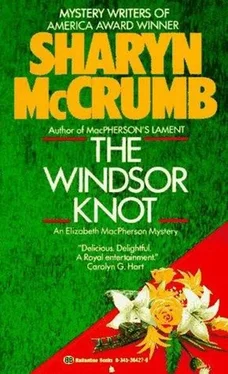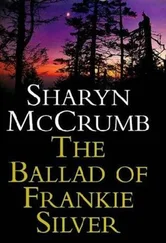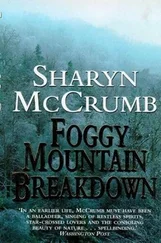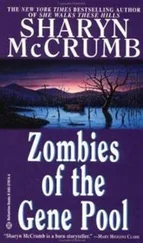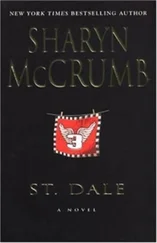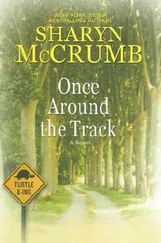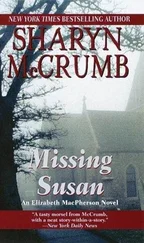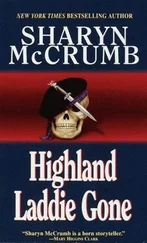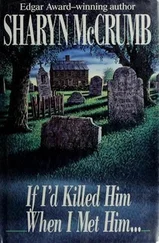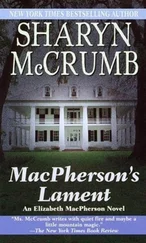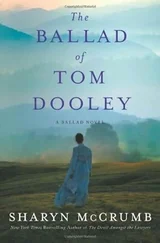Sharyn McCrumb - The Windsor Knot
Здесь есть возможность читать онлайн «Sharyn McCrumb - The Windsor Knot» весь текст электронной книги совершенно бесплатно (целиком полную версию без сокращений). В некоторых случаях можно слушать аудио, скачать через торрент в формате fb2 и присутствует краткое содержание. Жанр: Детектив, на английском языке. Описание произведения, (предисловие) а так же отзывы посетителей доступны на портале библиотеки ЛибКат.
- Название:The Windsor Knot
- Автор:
- Жанр:
- Год:неизвестен
- ISBN:нет данных
- Рейтинг книги:5 / 5. Голосов: 1
-
Избранное:Добавить в избранное
- Отзывы:
-
Ваша оценка:
- 100
- 1
- 2
- 3
- 4
- 5
The Windsor Knot: краткое содержание, описание и аннотация
Предлагаем к чтению аннотацию, описание, краткое содержание или предисловие (зависит от того, что написал сам автор книги «The Windsor Knot»). Если вы не нашли необходимую информацию о книге — напишите в комментариях, мы постараемся отыскать её.
The Windsor Knot — читать онлайн бесплатно полную книгу (весь текст) целиком
Ниже представлен текст книги, разбитый по страницам. Система сохранения места последней прочитанной страницы, позволяет с удобством читать онлайн бесплатно книгу «The Windsor Knot», без необходимости каждый раз заново искать на чём Вы остановились. Поставьте закладку, и сможете в любой момент перейти на страницу, на которой закончили чтение.
Интервал:
Закладка:
Perhaps she would be Jane Goodall and think he was a perfect chimpanzee when she read his letter.
Charles tried not to give in to his natural pessimism. There was nothing to do but write a letter in response to her ad. He must try to sound intelligent, charming, sophisticated. (Is that what glamorous blondes were after these days?) Unfortunately, Charles had very little practice in two-thirds of those attributes. Intelligent he could be. He had been reading Popular Electronics since second grade, and his grades (except in literature) were effortlessly good. He didn’t see why everybody made such a fuss about things like calculus; mathematics seemed perfectly straightforward to him. But perhaps his intellectual good qualities would not be endearing to this modern Athena. Charming and sophisticated he had never tried to be. That was Geoffrey’s department. For a fleeting moment, Charles considered enlisting Geoffrey’s help in composing the letter reply, but he dismissed the thought almost at once. If he told Geoffrey why he was doing it, it would spoil the whole plan, and if he pretended to be in search of a lady love, Geoffrey would laugh like a drain. The potential humiliation wasn’t worth it.
He read the article again for clues as to the lady’s preferences, but found nothing useful. He wished he had more to go on. It was difficult to make yourself attractive to someone you knew nothing about. Creative writing wasn’t his forte anyhow.
With a sigh of resignation, Charles extracted a sheet of writing paper from the desk drawer and stared down at it, hoping for inspiration. None was forthcoming. The sheet lay there smugly, daring him to jot down an equation or two to break up the expanse of emptiness.
What should he call her? Dear SWF seemed accurate, but crass. Dear Fellow Scientist sounded like a fund-raising letter from the greenhouse effect people. He glanced at the ad. Someday my prince will come… . That was a line from a fairy tale wasn’t it? Disney movie? Dredging up memories of longforgotten kiddie matinees, Charles finally placed the reference. Dear Snow White , he wrote carefully. I hope to become your prince .
He nodded approvingly to himself. Not bad for an inarticulate physicist, he thought. Not even to himself did Charles ever say the word nerd .
That evening in Edinburgh Margaret Dawson was having tea with the ladies’ circle from the church. (The primary item on the agenda was the forthcoming bazaar.)
Margaret’s sons, left to fend for themselves, had managed to brew a pot of tea around five o’clock and were making do with leftover pastries from yesterday, rather than attempting any actual cooking themselves. They were counting on a substantial meal later that evening to compensate for this temporary deprivation. A roast on the top shelf of the refrigerator seemed to substantiate their hopes in this matter. (Unfortunately, neither of these college-educated louts had noticed the note tacked to the door of the refrigerator, which read: Please put roast in oven on setting of gas mark 6 at 4:30. Love Mother.)
Blissfully unaware of the coming famine, Ian Dawson had finished off a plate of shortbread and was sitting at the kitchen table watching the now recovered Traveller tuck into his evening meal of whitebait when Cameron came in from the hall and poured himself a cup of tea, ignoring Ian completely. He carefully poured milk into the mug and stirred it, humming tunelessly. He started to put the milk jug into the refrigerator and then set it back down on the counter. “I keep forgetting that in this country, you don’t have to refrigerate milk,” he murmured. “When I first got to America, I tried leaving the milk out after breakfast. It didn’t last a bloody day.” He set his mug on the table, picked up the evening paper, and sat down to read it.
“Well?” said Ian impatiently. “What did they say about the gnome theft?”
“Who?” said Cameron, turning a page.
“The police, twit. Are they coming ‘round?”
Cameron sighed and set aside the paper. “If you’re so interested, Ian, you should have rung them up yourself.”
Ian grinned. “A bet’s a bet. Don’t be such a bad sport. Are they coming to investigate?”
“No. They took the information over the telephone. After all, there really isn’t anything for them to see. They just cautioned us to keep the house locked and to be especially careful for the next few days, in case the intruder comes back.”
“I suppose that makes sense. I wonder who would take a garden gnome. Did they have any theories? Did they laugh?”
Cameron shook his head. “They have no sense of humor. And no theories, either. The officer I talked to was probably younger than you are. It was all one to him. You might check with a few of your rowdier friends, though, to see if this qualifies as a collegiate prank.”
“I’ll ask. But it doesn’t seem likely.”
“The whole thing seems unlikely.”
“Well,” said Ian, “this will be quite a blow to Mother. Losing a son and a garden gnome all in the same week.”
CHAPTER 5

OF ALL THE royal palaces used by the monarchs of Scotland, only the palace of Holyroodhouse in Edinburgh is still used for royal hospitality and ceremonies. The Queen devotes most of her time in Scotland to her personal residence in the Highlands, Balmoral Castle, where she stays on holiday for ten weeks from early August until mid-October; but the Queen’s annual official visit to Scotland takes place in early July, at which time she occupies the nine-hundred-year-old palace of Holyroodhouse. It is a turreted, sandstone building, made gloomy by its deep-set windows and thick walls, and perhaps echoing the sorrows of its principal resident, Mary, Queen of Scots.
The original structure was an abbey, erected in the twelfth century by King David of Scotland upon the command of heaven. According to legend, King David insisted upon going hunting on the day of the Holy Rood (September 14), instead of spending the day in prayer and contemplation of the Cross (or Rood). During the hunt in the fields below Edinburgh Castle, the king became separated from his huntsmen, and he was thrown from his horse at the feet of an angry stag, its head lowered to gore him. Suddenly a mist enveloped the king, and when he put out his hand to ward off the attacking animal, he found himself grasping a cross between the antlers of the deer. The animal ran away-and King David resolved to build an Augustinian monastery, the Abbey of Holyrood, on the site of the miracle. In later years, Robert the Bruce held parliaments there.
In 1502, King James IV converted some of the structures into a royal residence in honor of his marriage to Margaret Tudor, sister of England’s King Henry VIII. This union of the thistle and the rose was celebrated at Holyrood, and the palace was further enlarged during the reign of their son James V. The abbey, destroyed in the “rough wooing” of the English in 1544, fell into ruins and was never rebuilt; only the foundations and the ruined nave of the church remain. The palace itself was rebuilt after the English invasion, and the daughter of James V-Mary, Queen of Scots-took up residence there in 1561. The nineteen-year-old Queen, already the widow of the King of France, married Lord Darnley in the Chapel Royal, and it was in Holyrood that the Queen’s secretary, David Rizzio, was murdered by Darnley and his men.
After Mary’s son, James VI, left Scotland to inherit the throne of Elizabeth I of England, the castle was abandoned by royalty for nearly two centuries. Bonnie Prince Charlie held court there during his ill-fated attempt to seize the throne, but it was not until the nineteenth century that another monarch took any interest in the palace. Queen Victoria, who loved all things Scottish, restored Holyroodhouse, and made it her custom to stay there once yearly, a tradition that has been continued by her descendants to this day.
Читать дальшеИнтервал:
Закладка:
Похожие книги на «The Windsor Knot»
Представляем Вашему вниманию похожие книги на «The Windsor Knot» списком для выбора. Мы отобрали схожую по названию и смыслу литературу в надежде предоставить читателям больше вариантов отыскать новые, интересные, ещё непрочитанные произведения.
Обсуждение, отзывы о книге «The Windsor Knot» и просто собственные мнения читателей. Оставьте ваши комментарии, напишите, что Вы думаете о произведении, его смысле или главных героях. Укажите что конкретно понравилось, а что нет, и почему Вы так считаете.
